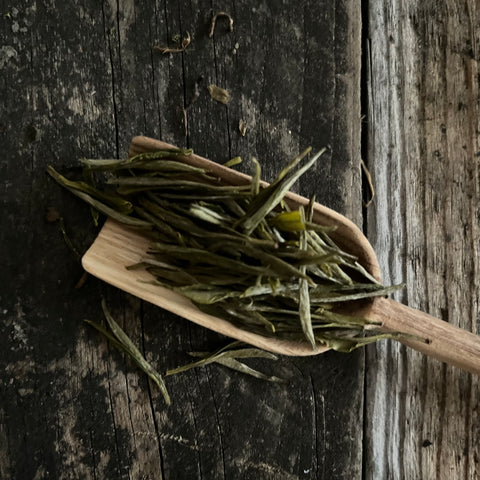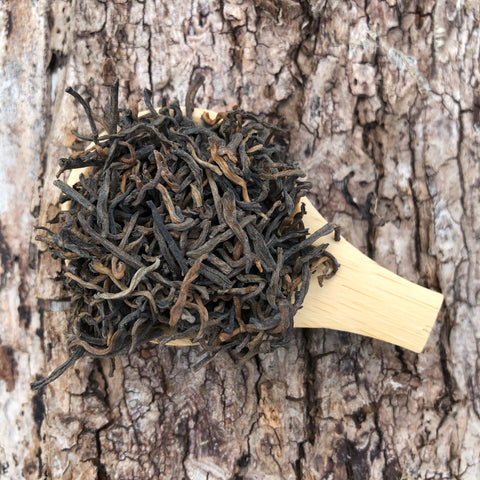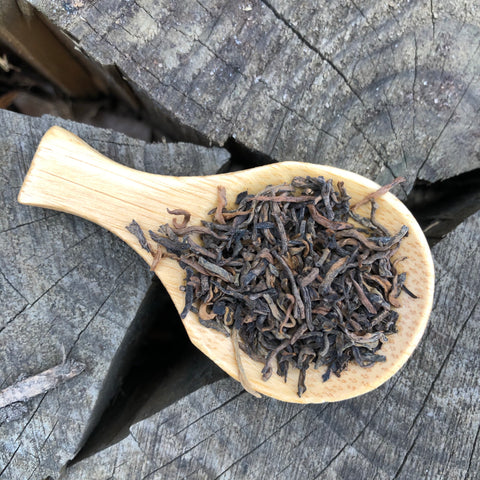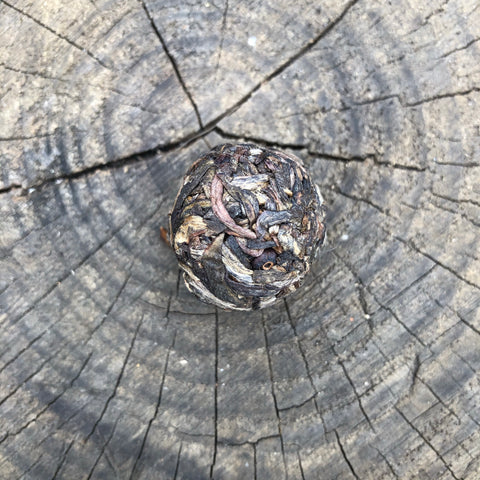2025 Nepal Yellow Tea
Simply put...
From the Sandakphu Tea Plantation, Jasbirey Village Ilam, Far East Nepal. This special small lot yellow tea is light, mild with vegetal and fruity notes and a sweet aftertaste
This tea will be delivered in our new compostable packaging >> read more here
In more depth...
Tea Name : Nepalese Yellow Tea
Tea Maker : Chandra Bhushan Subba
Origin : Jasbirey Village, Maipokhari, Ilam, East Nepal
The cooperative is currently comprised of 40 farmers over 10 hectares
Harvest Time : June
Cultivar : Ilam
Grade : Orthodox
Plucking standard : Leaves only
Processing : See detailed notes above
Experience : Light, mild with vegetal and fruity notes and a sweet aftertaste
Last visited by Comins : June 2018, Michelle Comins
How to prepare tea [Western Style]...
Amount of tea per bowl (200 ml): 2.5 g (1 tsp)
Water temperature: 100℃ / 212℉
Infusion / brewing time: 3 minutes
Number of infusions: 4
How to enjoy: No sugar, no milk.
How to prepare tea [Gaiwan]...
Amount of tea per gaiwan (150 ml): 2.5 g (1 tsp)
Water temperature: 100℃ / 212℉
Infusion / brewing time: 2 minutes
Number of infusions: 4
How to enjoy: No sugar, no milk.
Tales of the Tea Trade : Sandakphu
Sandakphu is the highest habitable point in the district of Ilam in the far eastern part of Nepal adjoining the Sikkim and Darjeeling hills of India. Sandakphu Tea Plantation is located at the foothills of Sandakphu Peak at a place known as Jasbirey Village and was initiated somewhere in the year 1990 with the plants derived from high quality tea varieties planted locally by ancient farmers migrating from other villages of Ilam district. The plantation is young and fresh nearing maturity and therefore, the quality of tea is considered very high as compared to many other tea areas of Nepal. The character and flavor profile of Sandakphu is unique to its bio-diversity and unique location found only in such high elevations (tea production unit is located at 6500 feet while the farmers plantations are as high as 8000 feet and plus).
We crossed the border from India at Kakarvitta and started the long and windy path up to Ilam in Nepal. I was full on anticipation to visit this co-operative - there is a special tone to tea from Sandakphu and my belief is that it is full of heart and positive intention. Of course this intention has fed the soil, the tea making process, the gentle human touch. The factory, which I always show to anyone who will listen :) is surely the most beautiful I have visited anywhere in the world

You can taste all this in the cup from Sandakphu. In my words 'Sandakphu under the leadership of Bhushan and Twistina place equal emphasis on people, land and plant. Their pioneering cooperative is aiming to be the first in Nepal to create complete transparency in the tea supply chain and in doing so set a standard for Nepal Tea to present to the world - ensuring a truly sustainable future for tea in this area and beyond'
Michelle : Extract from our our book Tales of the tea trade :
Chandra is a one-man force for change in the Nepali tea industry, and his passion for tea started many years ago. He explained: ‘I had a real craze for tea drinking when I was young. Later, I found an opportunity to specialize in tea from Assam, and then did my postgraduate studies on green tea from Japan. Tea was therefore a natural choice for me. I found myself as the only tea expert in the country.’ [....]
[....] I feel strongly that quality is the key to getting recognized overseas. Quality lies with the farmer – bringing them on board, working as a partnership. When we started Sandapkhu our idea was to go to a remote area, make a small factory and start producing quality teas. In the end, our aim is to be able to help the farmers buy the factory back, and own and run it themselves. It’s an idea we have shared widely with the small tea growers and small factories across Nepal who come to us for training.’
Further insight from our time at Sandakphu
The hills of Jasbirey stands parallel to the “Mai Pokhari Ramsar Site” a world heritage site in Nepal for wetlands. This tranquil environment makes the bio diversity of this place very unique, the pH of the water tested in Jasbirey is 7.2 and the ecology harbors many endangered species of wild flora and fauna Work at Sandakphu is carried out by the local farmers on their own land and therefore Sandakphu Tea is an entirely farmer based production with the ownership of the plantation remaining at the farmer level.
Bhushan shared with me how 'self employed farmers and producers at Sandakphu believe that quality can be achieved only by those who have the sense of ownership of the garden because tea quality is defined from the green leaf that is fed to the factory for processing. Since ownership of the garden is at farmer level, the farmers can therefore grow and harvest only the finest leaf for processing as opposed those who work as a labor for the corporate plantations'
Read more about our partner Bhushan and his life in tea here on our blog



















